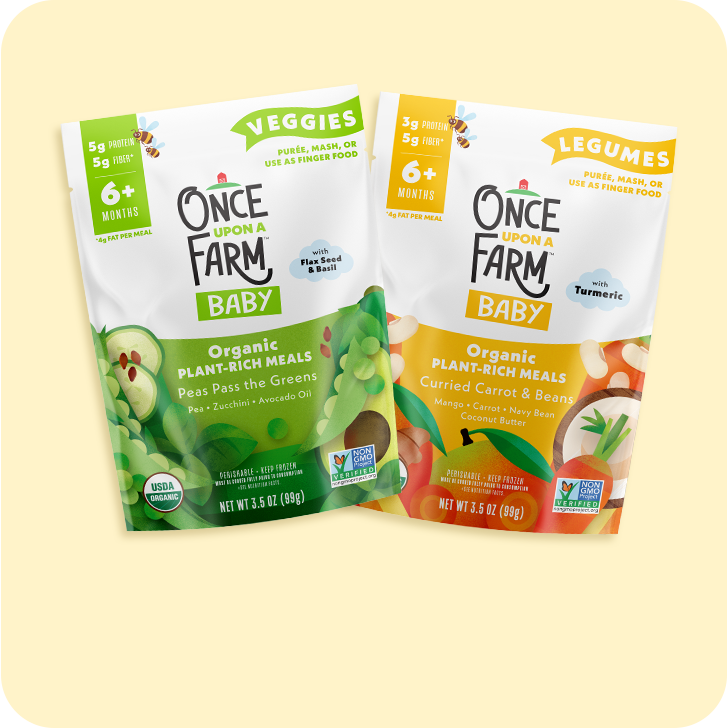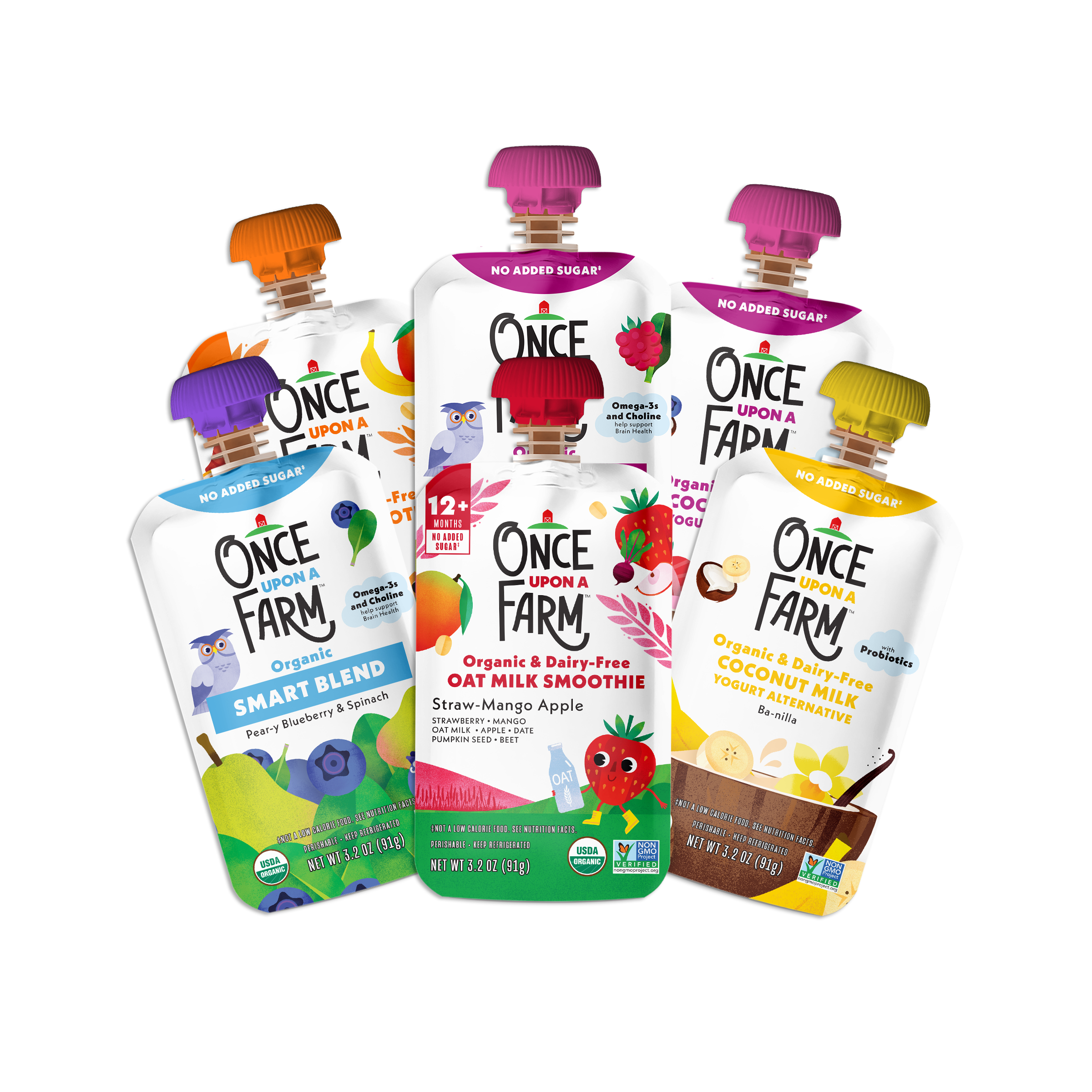As busy parents, we’re always looking for easy, healthy snacks and meals for our little ones with foods that pack a big punch of nutrient density. So, what are the most nutrient-dense foods and what are some great ways to serve them to our kiddos? To help us help you, we went to O’Farm expert, Kacie Barnes, MCN, RDN, LD.
1. Avocado
Serving size: ⅓ medium (50g/1.7oz)
A go-to food when starting solids due to their soft texture and neutral flavor, avocados are a source of fiber and monounsaturated fat (more on dietary fats here). Additionally, they contain vitamin K and folate.
2. Green Peas
Serving size: 3 tablespoons (80g/2.8oz)ˆ
Part of the legume family, green peas can be introduced to babies around six months. Peas are excellent sources of vitamin K, vitamin C, and fiber. They are rich in protein, vitamin B6, and magnesium. For babies, mash or flatten before serving. For older kids, Barnes suggests mixing peas into pasta, or serving on their own salted with butter.
3. Broccoli
Serving size: ¼ cup (45g/1.5 oz)
When cooked properly, broccoli can be served to babies (+ 6 months). Broccoli is an excellent source of vitamins C and K. When serving, Barnes suggests adding it into an omelet or cooking, then chopping it small and serving. She also recommends our Greens & Beans Plant-Rich Meal.
4. Quinoa
Serving size: ¼ cup (45g/1.5 oz)
A great first ‘grain’ for babies, quinoa has an earthy flavor and is easily combined with other foods. It’s an excellent source of magnesium and zinc. It is also a good source of protein and folate. There are many ways to offer quinoa, including on its own. One preferred recipe for Barnes is to stir in shredded Monterey jack cheese.
5. Eggs
Serving size: ½ an egg (25g)
Eggs are a great choice for baby’s first foods. They are a good source of complete protein, as well as vitamin A. They are an excellent source of choline, vitamin B12, and riboflavin. There are many ways to serve eggs. Barnes says a great recipe is to make simple pancakes with eggs, oats, and banana. Yum!
Note: Eggs are a potential allergen. Please use caution when introducing and check with your child’s healthcare provider with any concerns.
6. Whole Milk Yogurt
Serving size: ⅓ cup (45g/ 1.5 oz)
Whole milk yogurt is a favored food for babies and young children as it can be served plain, topped with a range of add-ins, or combined into other recipes. In terms of nutrients, yogurt contains protein, calcium, phosphorus, and probiotics. Barnes recommends serving plain or with fruit like raspberries.
Note: Milk is a potential allergen. Please use caution when introducing and check with your child’s healthcare provider with any concerns.
7. Butternut Squash
Serving size: ¼ cup (50g/1.75 oz)
When cooked properly, butternut squash is great for babies starting solids. It contains magnesium, fiber, and vitamins A and C. Barnes suggests roasting strips and topping the squash with cinnamon.
8. Hulled Pumpkin Seeds/Pepitas
Serving size: 3 teaspoons (7g/.25 oz)
An easy add-in for many meals, pumpkin seeds are an excellent source of magnesium and contain zinc,. Barnes suggests making a pumpkin seed pesto for pasta or offering our Berry Berry Dairy-Free Smoothie.
9. Chia Seeds
Serving size: 2 teaspoons (10g/.35 oz)
These tiny seeds are stuffed full of nutrients, including 1–2g of Omega-3 fatty acids. They’re also a good source of fiber and an excellent source of minerals like zinc and magnesium. They blend very well into many meals. Barnes recommends strawberry chia jam, which can be served in yogurt, oatmeal, or pancakes.
Packing a big punch of nutrients and incredibly easy to serve, these foods are great to have on hand when starting solids—and always!
Note: Food suggestions are not appropriate for all age groups. Be sure that your child is ready for these snacks. Be mindful of food size and texture and cut into age-appropriate pieces to minimize choking risk as needed. Only feed your child when they are seated and supervised. More info on choking hazards here.





















